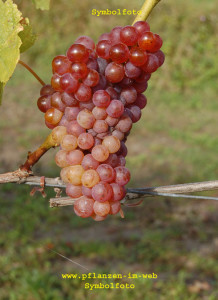The “Who’s Your Daddy” series takes a brief look at the parentage of grapes, in order to get a better understanding of where particular varietals come from and how they are genetically related to one another. So far, we’ve covered: Cabernet Sauvignon, Chardonnay, Gamay, Merlot, Nebbiolo, Petite Sirah, Petit Verdot, Pinotage, Sangiovese, Syrah, and Tempranillo. Feel free to click on any one of the varietal names to read all about their parentage.
The subject of today’s “Who’s Your Daddy” post is the Argentinian grape, Torrontés riojano.
![By Djzonda (Own work) [CC-BY-SA-3.0 (http://creativecommons.org/licenses/by-sa/3.0)], via Wikimedia Commons](http://www.academicwino.com/wp-content/uploads/2012/12/Torrontes-riojano-The-Academic-Wino1-300x225.jpg)
By Djzonda (Own work) [CC-BY-SA-3.0 (http://creativecommons.org/licenses/by-sa/3.0)], via Wikimedia Commons
Up until DNA testing on Torrontés riojano was completed in 2003, it was thought that Torrontés riojano from Argentina was the same grape as the Torrontés from Spain. After the genetic analysis, however, it was found that these two varieties are actually not related at all and are two genetically distinct grapes. Torrontés riojano is considered to be the only variety that is 100% native Argentinian, and is becoming more and more popular not only in Argentina, but in countries all over the globe.
According to the Wines of Argentina website, the first known cultivation of Torrontés has been traced all the way back to the Spanish Conquerors in the 1500s and it has been going strong ever since. Torrontés riojano is thought to be the most widely planted white grape in Argentina. According to the Altura Argentina Wine Tourism website, there are approximately 8,180 hectares of Torrontés riojano planted in Argentina, though it is not abundantly clear when this statistic was last updated.
Viticulture
It has been said that the best environmental conditions for optimal Torrontés riojano growth is in cool, dry places that have high temperature differentials (large differences between night and daytime temperatures). Torrontés riojano tends to do well at high altitudes as well. Locations with good air flow are also good characteristics of a quality Torrontés riojano site. The grapes themselves are quite large and are present on the vine in loose clusters.
Sensory Characteristics
As an aside: I haven’t had the pleasure of tasting Torrontés riojano myself, so the flavors and aromas described next are based on other people’s tasting notes. Please feel free to add if there is something I’ve missed.
Torrontés riojano wines are light bodied and possess a pale gold with light green hue coloring. In regards to aroma, Torrontés riojano wines are very aromatic, possessing strong aromatic tones and some citrus aromas as well. Some say Torrontés riojano wines share very similar characteristics to Viognier wines, with the strong aromatic aroma in addition to citrus and peach. Specific floral notes that some have noted on the nose of Torrontés riojano include geranium, orange blossom, and jasmine.
On the palate, Torrontés riojano wines are typically very dry, light, have balanced acidity, and mineral on the finish. Torrontés riojano wines are not usually aged in oak barrels after fermentation, and are often meant to be consumed at a young age. From the descriptions of Torrontés riojano wines that I’ve read, it sounds as though if you like Viognier and you like Pinot Grigio (for those that like a little minerality), Torron Torrontés tes riojano may be a great varietal to try next!
So, Who’s Your Daddy, Torrontés riojano?
I’ve kept you waiting long enough (or maybe you just skipped to the end)! After DNA fingerprinting and analysis in 2003 researchers at the Universidad Nacional de Cuyo in Mendoza, Argentina and at the University of California Davis unveiled the parentage of the Torrontés riojano grape.
Without further ado, I give you the genetic parents of Torrontés riojano:
Muscat of Alexandria….
….and….
….Criolla chica

Source: http://www.pflanzen-im-web.de/pflanzen/pflanzen-suche/Obstgehoelze/Weinrebe-Criolla-Chica-Vitis-vinifera.php#
I hope you’ve enjoyed this brief foray into the origins of the Torrontés riojano grape! If you have any questions or other information to add that I’ve missed, please feel free to leave your comments!
Cheers!
Sources:
Agüero, C.B., Rodríguez, J.G., Martínez, L.E., Dangl, G.S., and Meredith, C.P. 2003. Identity and Parentage of Torrontés Cultivars in Argentina. American Journal of Enology and Viticulture 54 (4): 318-321.
http://www.winesofargentina.org/argentina/variedades/blancas/torrontes/ Accessed 12/11/2012
http://www.argentinawinetourism.com/wine_tourism_argentina/03-argentina_wine_varieties/10-torrontes_argentina.htm Accessed 12/11/2012
http://www.anuvawines.com/i/white-wine-varietals/torrontes/ Accessed 12/11/2012

![By Viala et Vermorel (Ampélographie) [Public domain], via Wikimedia Commons](http://www.academicwino.com/wp-content/uploads/2012/12/Muscat-of-Alexandria-The-Academic-Wino-211x300.jpg)